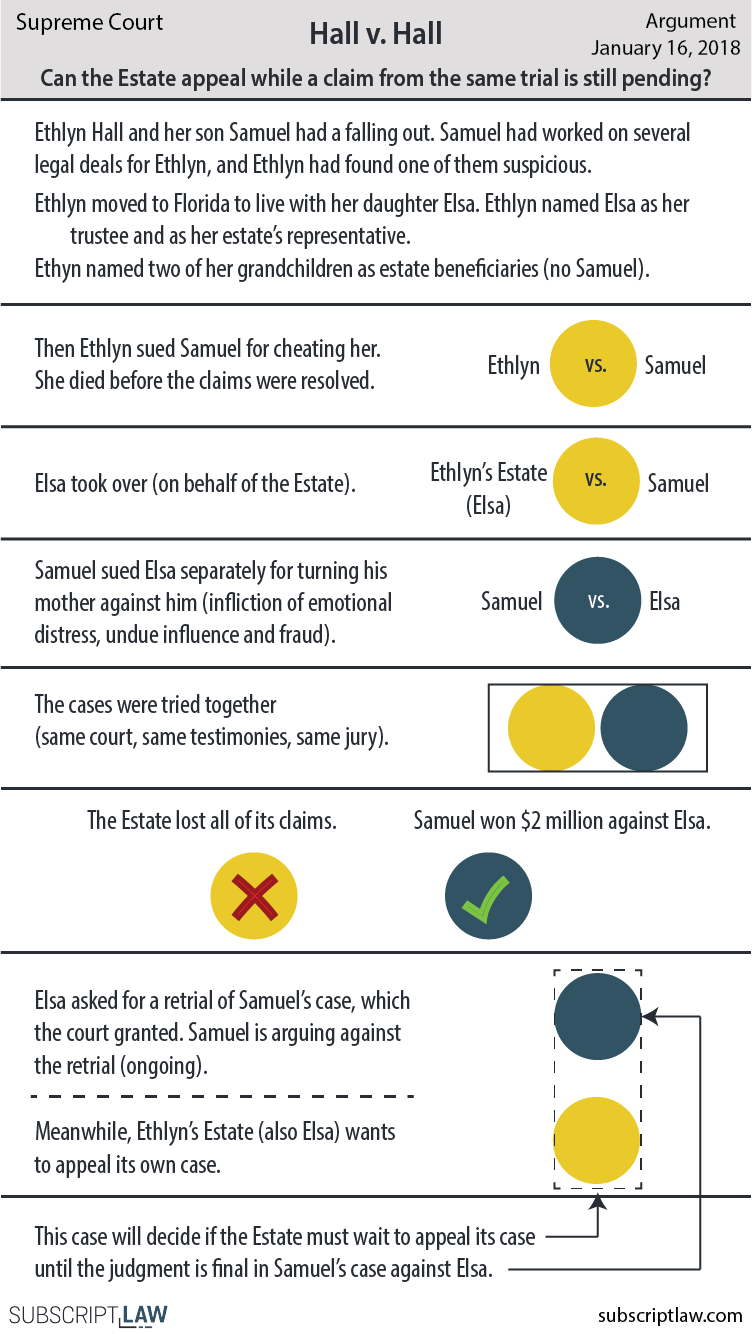
This case has been decided. See how it turned out!
Because the judicial system doesn’t have endless resources, the Supreme Court must decide cases like this one.
Procedural cases often do not catch the mainstream news because they deal in abstract concepts. The issue in this case is not about a Constitutional right, or something we can see or feel (a gun, a search, or discrimination). This case is about a court rule and a concept we don’t think about much.
The concept here is judicial economy. Our courts can’t waste their efforts. We can’t have two different courts trying the same exact case. That would be a waste. Sometimes similar or related cases are consolidated so the judicial effort can be multiplied.
 In Hall v. Hall, the lower court decided that two related cases should be tried together. Now, one of them still is ongoing, and the loser of the other case wants to appeal. The Supreme Court will decide if the cases still need to be tied together for purposes of the appeal (which would mean the appeal must wait).
In Hall v. Hall, the lower court decided that two related cases should be tried together. Now, one of them still is ongoing, and the loser of the other case wants to appeal. The Supreme Court will decide if the cases still need to be tied together for purposes of the appeal (which would mean the appeal must wait).
The party that wants to separate the cases (Elsa Hall) argues the cases are distinct enough that they can be separated. In 2015 the Supreme Court made a ruling that Elsa is trying to parallel here. In that case, Gelboim v. Bank of America, the Court ruled that cases which have been consolidated across districts (multi-district litigations) for pretrial purposes can be separated for purposes of appeals.
This case is a single district case, and the consolidation was not limited to pretrial purposes. We will see if the cases can be separated for appeals in this situation.
Other procedural cases this term:
- Hamer v. Neighborhood Housing Services of Chicago (decided Nov. 8, 2017)
- Artis v. District of Columbia (awaiting decision; argued Nov. 1, 1027)
- Cyan v. Beaver County Employees Retirement Fund (awaiting decision; argued Nov. 28, 2017)


